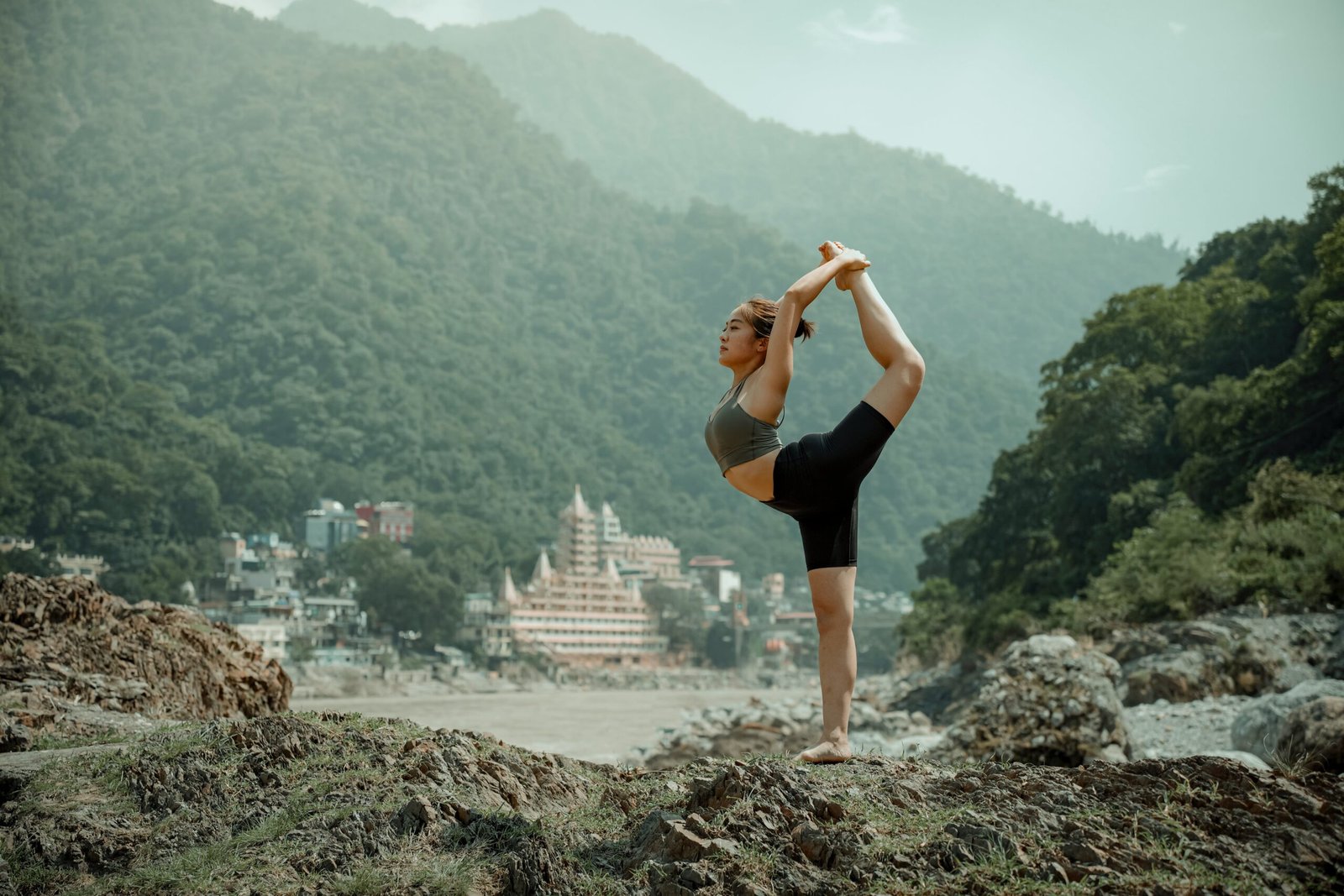Ashtanga Yoga: Navigating the Eight-Limbed Path to Holistic Well-being
Ashtanga Yoga is an ancient practice that offers a path to holistic well-being. It takes us on an eight-limbed journey, guiding us towards a deeper understanding of ourselves and the world around us. In this article, we will explore the transformative power of this practice and the profound impact it has on our mind, body, and soul.
Ashtanga Yoga is a comprehensive and powerful yoga practice that encompasses the physical, mental, and spiritual aspects of our being. It provides a holistic approach to wellness and self-discovery, offering a path to enlightenment and inner peace. Developed thousands of years ago in ancient India, Ashtanga Yoga has withstood the test of time and continues to be practiced and celebrated around the world.
At its core, Ashtanga Yoga is a systematic and structured practice that combines breath, movement, and focused attention to cultivate strength, flexibility, balance, and mindfulness. The word “Ashtanga” means “eight limbs” in Sanskrit, referring to the eight components or stages of this profound yogic path.
These eight limbs are:
1. Yama: Ethical Principles
The first limb of Ashtanga Yoga is Yama, which focuses on ethical principles and moral conduct. It encourages practitioners to cultivate qualities such as truthfulness, non-violence, honesty, and self-control. By adhering to these principles, individuals create a foundation of integrity and respect for themselves and others.
2. Niyama: Self-Discipline
Niyama, the second limb, emphasizes self-discipline and self-care. It involves practices such as cleanliness, contentment, self-study, and surrender to a higher power. By nurturing self-discipline, individuals develop inner strength and cultivate a sense of gratitude and self-awareness.
3. Asana: Physical Postures
Asana, the third limb, is the physical practice of yoga postures. It involves various poses and sequences that promote strength, flexibility, and balance. Through regular asana practice, individuals cultivate physical well-being, release tension, and prepare the body for meditation.
4. Pranayama: Breath Control
Pranayama, the fourth limb, focuses on breath control. It involves various breathing techniques that help regulate and enhance the flow of life force energy (prana) in the body. By practicing pranayama, individuals develop a deeper connection between the body, breath, and mind, promoting clarity and vitality.
5. Pratyahara: Withdrawal of the Senses
The fifth limb, Pratyahara, involves the withdrawal of the senses from external distractions. By turning inward and detaching from sensory experiences, individuals gain control over their reactions and develop a heightened sense of focus and concentration.
6. Dharana: Concentration
Dharana, the sixth limb, refers to concentration. It involves focusing the mind on a single point or object, cultivating mental clarity and stability. Through the practice of Dharana, individuals develop the ability to quiet the mind and direct their attention towards a specific intention or goal.
7. Dhyana: Meditation
Dhyana, the seventh limb, is the practice of meditation. It involves maintaining a state of focused awareness and inner stillness. Through regular meditation practice, individuals cultivate a deeper connection with their true nature, experience inner peace, and gain insight into the nature of their thoughts and emotions.
8. Samadhi: Union with the Divine
The eighth and final limb of Ashtanga Yoga is Samadhi, which represents the ultimate goal of the practice – union with the divine. Samadhi is a state of complete absorption and transcendence, where the practitioner experiences a sense of oneness with all things. It is a state of pure bliss, where the individual transcends the limitations of the ego and realizes their true nature.
By embracing the eight limbs of Ashtanga Yoga, practitioners can embark on a transformative journey that integrates physical health, mental clarity, and spiritual growth. It is a path that requires discipline, commitment, and self-reflection, but the rewards are profound—a life filled with balance, harmony, and a deep sense of purpose.
The Benefits of Ashtanga Yoga
Practicing Ashtanga Yoga offers numerous benefits for both the body and mind. The physical postures (asanas) help improve strength, flexibility, and posture, while the breath control techniques (pranayama) promote relaxation and stress reduction. The practice of meditation enhances mental clarity, focus, and emotional well-being.
Furthermore, Ashtanga Yoga provides a holistic approach to well-being by addressing not only the physical aspects but also the ethical and spiritual dimensions of life. By incorporating the eight limbs into their practice, individuals can cultivate a balanced and harmonious lifestyle that promotes inner peace, self-awareness, and personal growth.
Conclusion
Ashtanga Yoga offers a transformative journey towards holistic well-being. By navigating the eight-limbed path, individuals can cultivate physical strength, mental clarity, and spiritual growth. Whether you are a beginner or an experienced practitioner, embracing the principles of Ashtanga Yoga can lead to a deeper understanding of yourself and a more fulfilling life.
Join our Online Yoga Sessions focusing on Inner wellness.
Follow us on Instagram & Facebook for the online & offline sessions.
Startough – Stay Tough!
